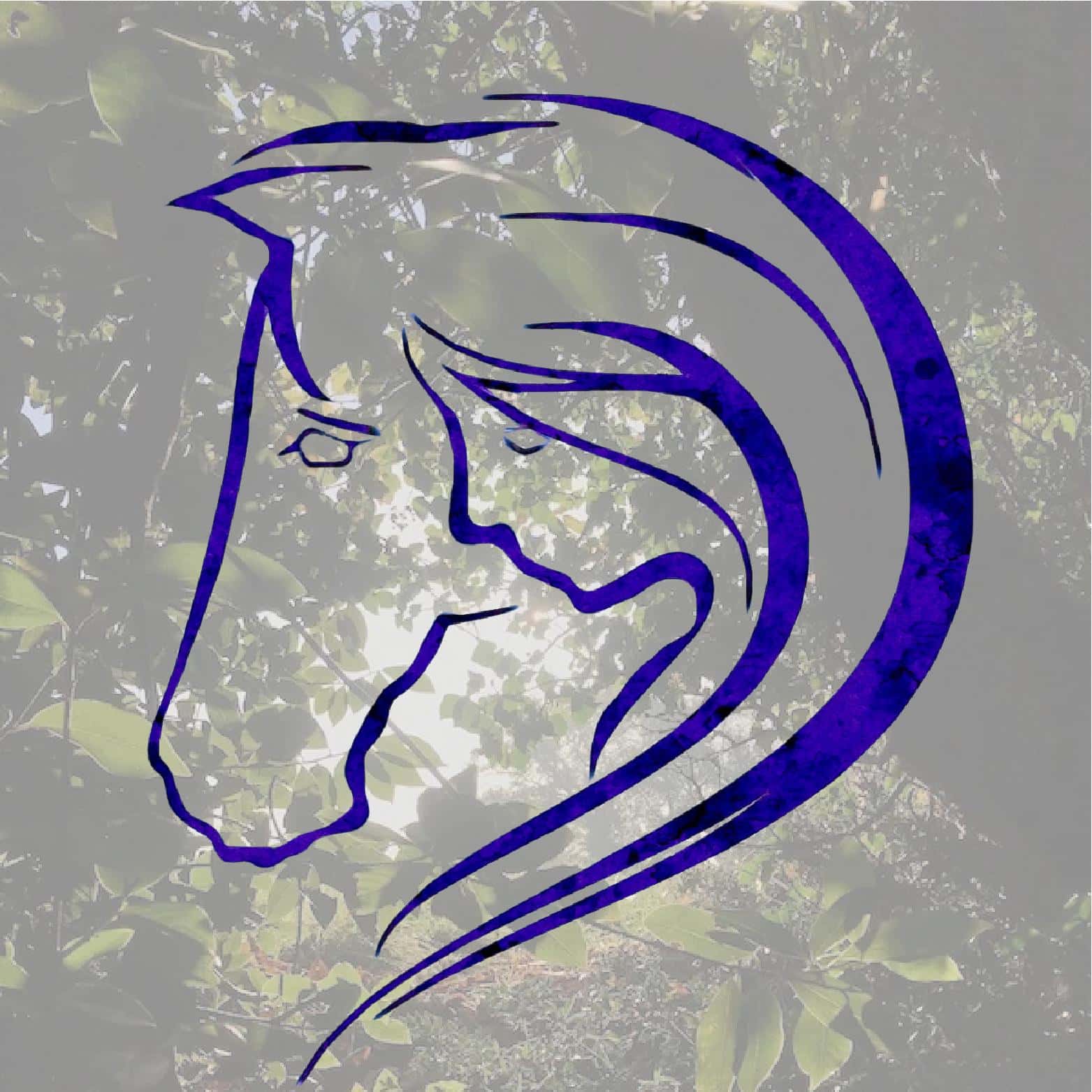Horses have a natural tendency to put themselves in what could be called an ‘uncooperative balance’ relative to people when they are defending themselves. We may feel that they don’t have any need to defend themselves in their interactions with us, but often our demands are threatening to them. For example putting them in a difficult situation will trigger defensiveness. This might be separating them from other horses or insisting that they hold their legs up to have their feet trimmed. These demands will make horses feel vulnerable enough to defend themselves.
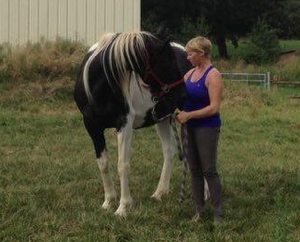
Being able to influence a horse’s balance means you are able to make them feel more secure in your presence. Understanding the way horses move, and how it affects how they feel physically can make a big difference in your relationship.
It can also open possibilities to connect in more spiritual ways.
Aimee has come into a lovely, accepting halt where she is in a fully cooperative balance. She is ready here to yield sideways, to step back wards or lift her inside legs up easily.
What Is Uncooperative Balance?
An ‘uncooperative’ balance expresses the horse’s wish to escape. When this happens they will push their shoulder into the handler, bend their bodies around in the other direction and turn their heads away. They can use the strength in their neck to liberate their head and side-line their handler.
It is very difficult to connect with a horse who is holding themselves in this defensive posture. This is because they are weighting themselves down on the side closest to the handler. That makes those legs ‘unavailable’ to the handler, because the horse’s weight is in them. In addition to this, the horse cannot yield from the handler because they are facing the wrong way to be able to bend around the handler. For these reasons the handler is in an ineffective and and vulnerable position.
The same vulnerability happens under saddle when the horse bends against the direction they are moving in. Although the rider is on top and not in danger of being squashed, they are in a similar unbalanced dynamic. The horse will not be responsive to aids, balance well or slow down easily.
How Can You Create Cooperative Balance?
To correct the stance and bring the horse into cooperative balance is relatively simple. Think about asking the horse to bend themselves around you, as if they were giving you a big hug. If the horse has a cavesson or head-collar on you can ask them gently to turn their nose towards you, thus bending their neck around you. If not you can ask them to soften their neck and even bring their nose around gently with your hands. You can ask the horse to yield at their girth and turn the bend around. This means that the curvature of their body includes you rather than excludes you.
The position of the horse’s shoulders depends on the rest of the horse’s body. They could be ‘against’ you if the rest of the horse is turning away or ‘with’ you and dictating the correct bend. Focus on the way the horse is carrying their weight. You want to feel that they are dainty and light in their inside fore-leg and hind-leg. Compare this in your mind with the weight in their outside fore-leg and hind-leg. Can you easily ask them to yield backwards or sideways, or turn around you?
Why Is Cooperative Balance Helpful?
The ability to bring a horse into cooperative balance is the foundation of all training with horses. It is important whether you are standing with them loose in the field, or riding half-pass in the arena. Without the feel for this balance it is difficult to make sense of how to control a horse’s movement with your posture.
In situations where you are asking the horse to do something for you, like letting you trim their feet, being able to re-balance them gently will relax them enormously. They will be able to lift their leg more easily and feel safer.
Asking Aimee for Cooperative Balance
Non Cooperative Balance
Aimee was getting excited as the other horses were having a fun gallop, so I decided it would help her relax to ask her to adapt her balance.
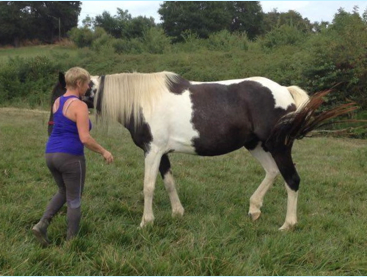
Aimee is starting out in a non-cooperative balance here, she is bending her body away from where I am standing and her shoulder becomes a defensive tool. Interestingly the human posture will tend to reflect the horse, and I am coming out of my centre of balance at first to match her. There is a similarity to operating a yoyo when engaging with a horse – you follow them out and then draw them back in until the connection is made. Here we are beginning to correct our mutual balance.
Straightening Up
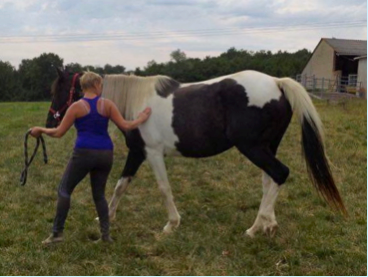
I am asking Aimee to flatten out her bend and align her inside shoulder with her ribcage. Standing a bit taller and tucking my pelvis also helps Aimee to carry herself more elegantly. I am using friendly touch to connect with her body so I can alter her carriage through direct contact yielding and bring our energy into alignment.
Beginning to Bend
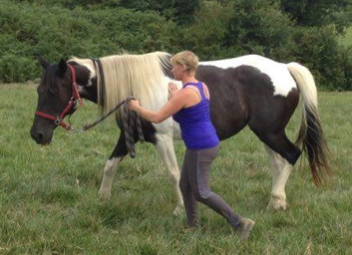
Here Aimee is beginning to bring herself into the left bend which will embrace my personal space rather than reject it. She is relaxing and stretching her neck deeper. I have chosen to let my upper body follow her a little in order to give her a greater feeling of freedom in her neck. She is very sensitive to being restrained and in this moment I wanted to give her confidence by following her boundary rather than imposing my own.
Cooperative Balance
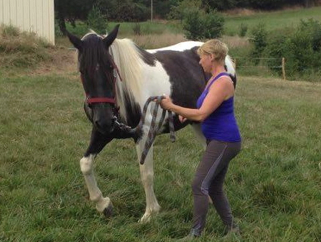
The ‘follow’ was successful and Aimee was able to gather herself and soften around me, so I can lift myself back upright and draw her into my space. She started off this exercise quite charged up because a lightning storm was coming in and the flies had intensified their activity. She was quite forward and unreceptive at first, but the process of asking her to straighten and improve her balance calmed her and slowed her right down.
Situations Where Cooperative Balance Helps
- Mounting
- Waiting Calmly
- Picking out or trimming feet
- Opening & shutting gates
- Removing or putting on a head-collar or bridle
- Grooming
- Healing
More information about force-free, horse friendly instruction for horse loving horse guardians.
